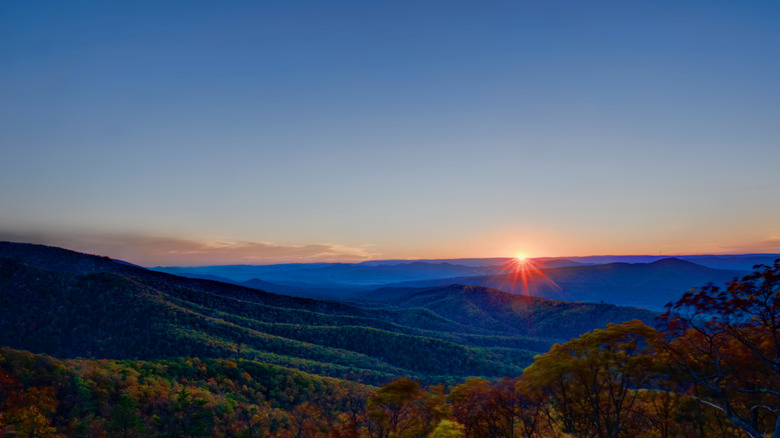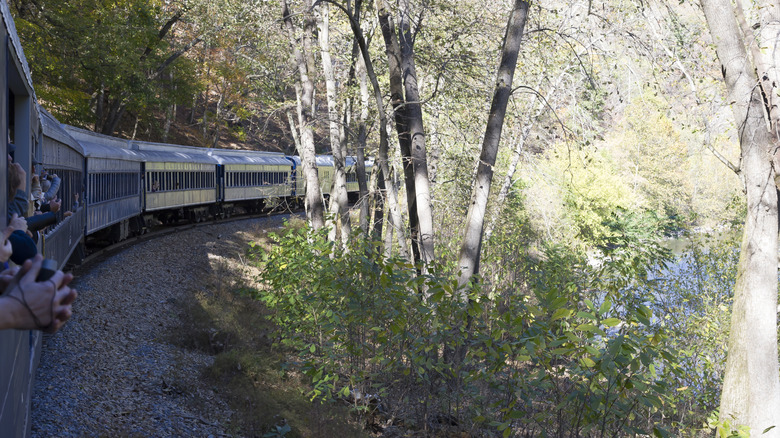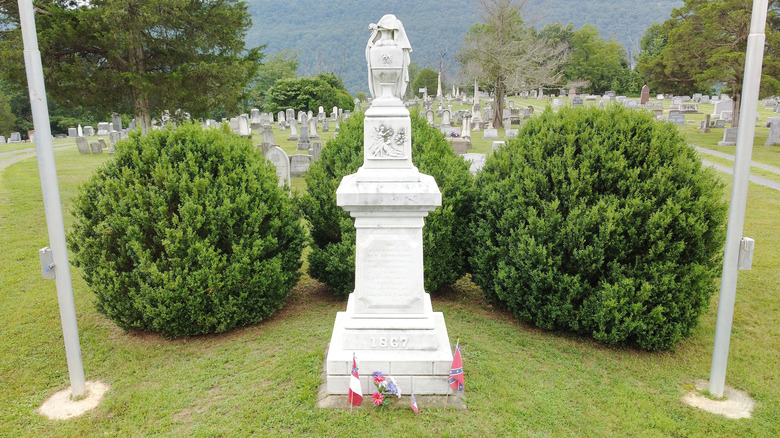One Of West Virginia's Most Overlooked Towns Has Mountain Views, A Scenic Railroad, And Civil War Sites
There's a lot of history and beauty hidden in the mountains of West Virginia, something residents of Romney know firsthand. This charming small town is the state's second oldest by a hair. It was first charted in 1762, the same year that the artsy mountain gem of Shepherdstown was established, which holds the official title of West Virginia's oldest town.
Like Shepherdstown, Romney is roughly an hour from the Winchester Regional Airport (OKV), though in the opposite direction. This puts it about two and a half hours from Pittsburgh and roughly the same distance from either Baltimore or Washington, D.C., making it an accessible road trip destination for visitors from a variety of urban centers who want to escape the city bustle.
As you might expect from a historic small town, nostalgia is a notable draw in Romney. You'll feel this at the Main Street Grill, which has a 1950s-style soda shop along with an eclectic menu that combines American, Chinese, Italian, and Southwestern influences. Shops like The Country Store on Main and Hampshire County Helping Hands sell vintage goods, while the Koolwink Motel has a similarly old-school vibe, hearkening back to when it first opened in 1936. While there are a lot of things to love about Romney, most visitors come for two things: its spectacular Allegheny Mountain vistas and its extensive Civil War history.
Explore nature in Romney, on foot or by rail
Similar to nearby underrated mountain towns like Thomas, Romney has a wealth of natural beauty for visitors to enjoy. It's built along the South Branch Potomac River, about 14 miles north of South Branch Mountain and surrounded by outdoor recreation spaces. Visitors can hike the historic trails of Fort Mill Ridge Wildlife Management Area, go hunting or fishing at North River Retreat, and see the unique boreal plants and neotropical birds on the 149-acre Ice Mountain Preserve.
Those who prefer to soak up the sights without the physical exertion can take a ride on the Potomac Eagle. Board the train at Wappocomo Station, a few minutes north of downtown Romney, to take a scenic tour. Popular options include the 90-minute Green Spring Special that follows the Potomac River or the three-hour Trough Canyon expedition, where passengers can spot American bald eagles while they take in the landscape. The Potomac Eagle also offers seasonal trips, including a Sunset Trough Trip in the summer and the interactive North Pole Express in November and December, which features Christmas carols, a live animal nativity, and gifts for the kids straight from Santa.
Historic Civil War sites in Romney
Built on a major crossroads, Romney saw a lot of action during the Civil War, changing hands multiple times between Colonel Lewis Wallace's arrival in June 1861 and the final Confederate occupation in April 1865. This included a notable occupation by Thomas Jonathan "Stonewall" Jackson in January 1862, known as the Bath-Romney Campaign. Jackson's occupation is memorialized with a plaque in the nearby town of Berkeley Springs, better known today for putting West Virginia's creative scene on the map.
The Confederate Memorial Monument in Romney's Indian Mound Cemetery was one of the first Civil War memorials erected in the South, built in 1867. A few blocks down West Gravel Lane is Taggart Hall, which was built as a private residence between 1795 and 1798 and today houses a Civil War Museum. The Davis House on Main Street is also preserved as a museum, with tours arranged through the Hampshire County Public Library. Built in 1798, it served as a Confederate meeting place as well as the home of the Davis family, who sent three sons to fight in the war — two for the Confederacy and one for the Union.
Romney has plenty of other sites with a Civil War connection. Liberty Hall was used by both the North and South, though it's often referred to as "Stonewall" Jackson's Headquarters. The Boxwood and Romney Presbyterian Church were both used as hospitals during the war. Sycamore Dale, just outside of town on South Branch River Road, is said to be where McNeill's Rangers, a Confederate partisan cavalry unit, gave their final surrender in May 1865. Across the river is Fort Mill, where visitors can see some of the best preserved trenches of the Civil War.


